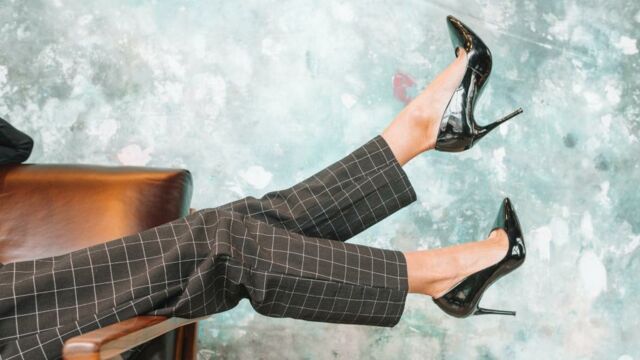Walking elegantly in high heels is possibly every woman’s dream. They not only make you look fashionable but also make you look sexier. However, if you wear high heels regularly, the price you have to pay for it might not be worth it.
Discover our latest podcast
Wearing high heels causes a lot of problems to your foot and back both. They impair stability and increase the risk of injury. Leg, back and foot pain are just the usual complaints, excessive use of high heels can cause structural changes as well.
Posture
Heels place your foot in a plantarflexed position, increasing the pressure on your forefoot. The higher the heels, the more the pressure. This causes your body to change the centre of gravity to hips which further causes an unnatural curvature in the lower back.
Balance
Walking on heels makes it tough to navigate different surfaces, elevations and inclines. Heels place your foot in an outward splaying position, throwing all the weight on the balls of your feet. They inherently force pressure on your foot and ankle, increasing the risks of falls and twisted ankles.

Gait
Generally, women who wear extremely high heels have a lumbered, giraffe-like gait particularly, if their backs, calves and knees are not that strong. Heels prevent you from pushing off the ground efficiently. Thus, your knees need to stay more flexed. This unnatural position causes the hip flexor muscles to work harder.
Back
High heels increase the risk of chronic back pain. The regular C-curve shape of the back acts as a shock absorber and reduces the weight-bearing stress on vertebrae and pelvis. High heels ruin this position and flatten the curve.
Knees
High heels increase the distance from the floor to the knee, making the knee do excessive rotations and causing compression. This would cause the knee to turn inward in part for balance. This altered position of the knee is one of the common signs of osteoarthritis.

Hips
Heels might feel like an exercise for your hips, but they cause the maximum amount of lower back and hip pain. Wearing heels forces the hip muscles to be in a persistent flexed position which can shorten and contract them and flatten the lumbar spine.
Feet
The increased pressure on your feet after wearing heels can cause pain or foot deformities such as bunions and neuromas. It also causes the ligament that supports the arch to tighten as well.
Ankle
Wearing heels limit the motion and power of the ankle joint. They cause the calf muscles to shorten due to excessive height and contracts the Achilles tendons. Over time, wearing heels can lead to disfigured ankles.















